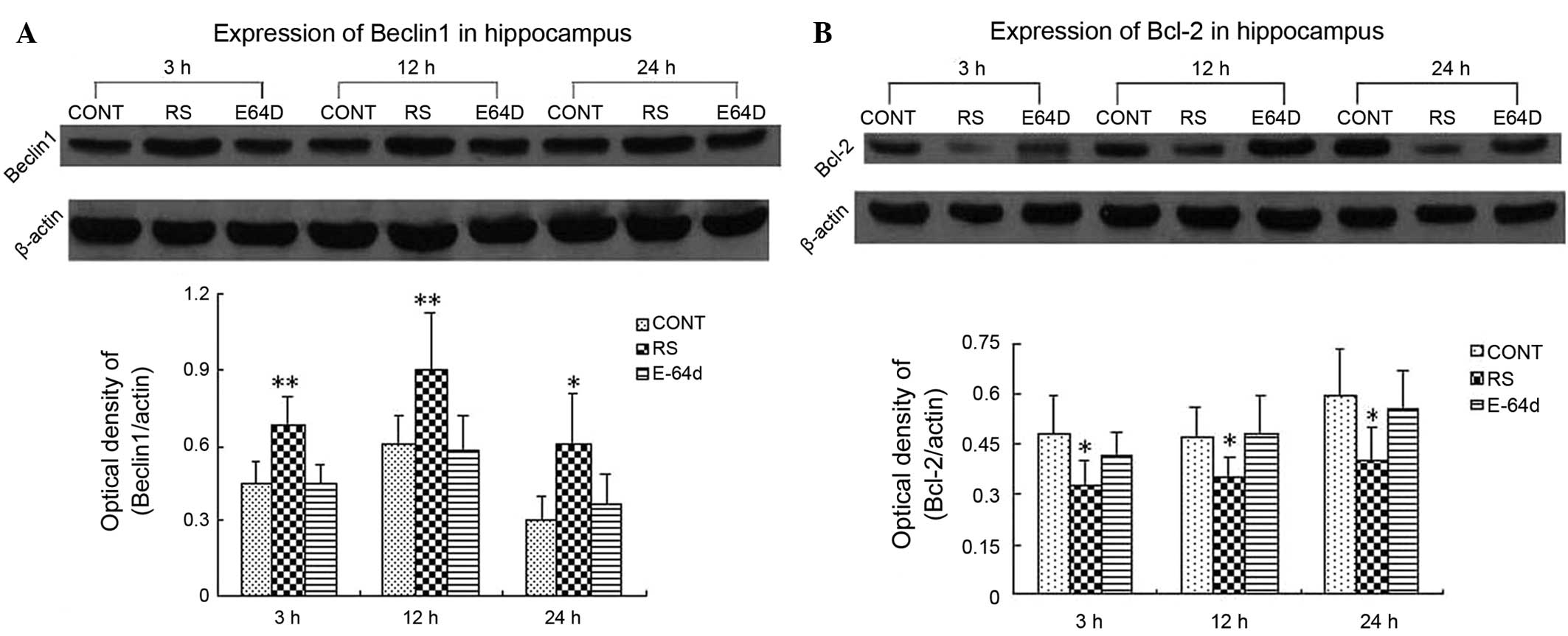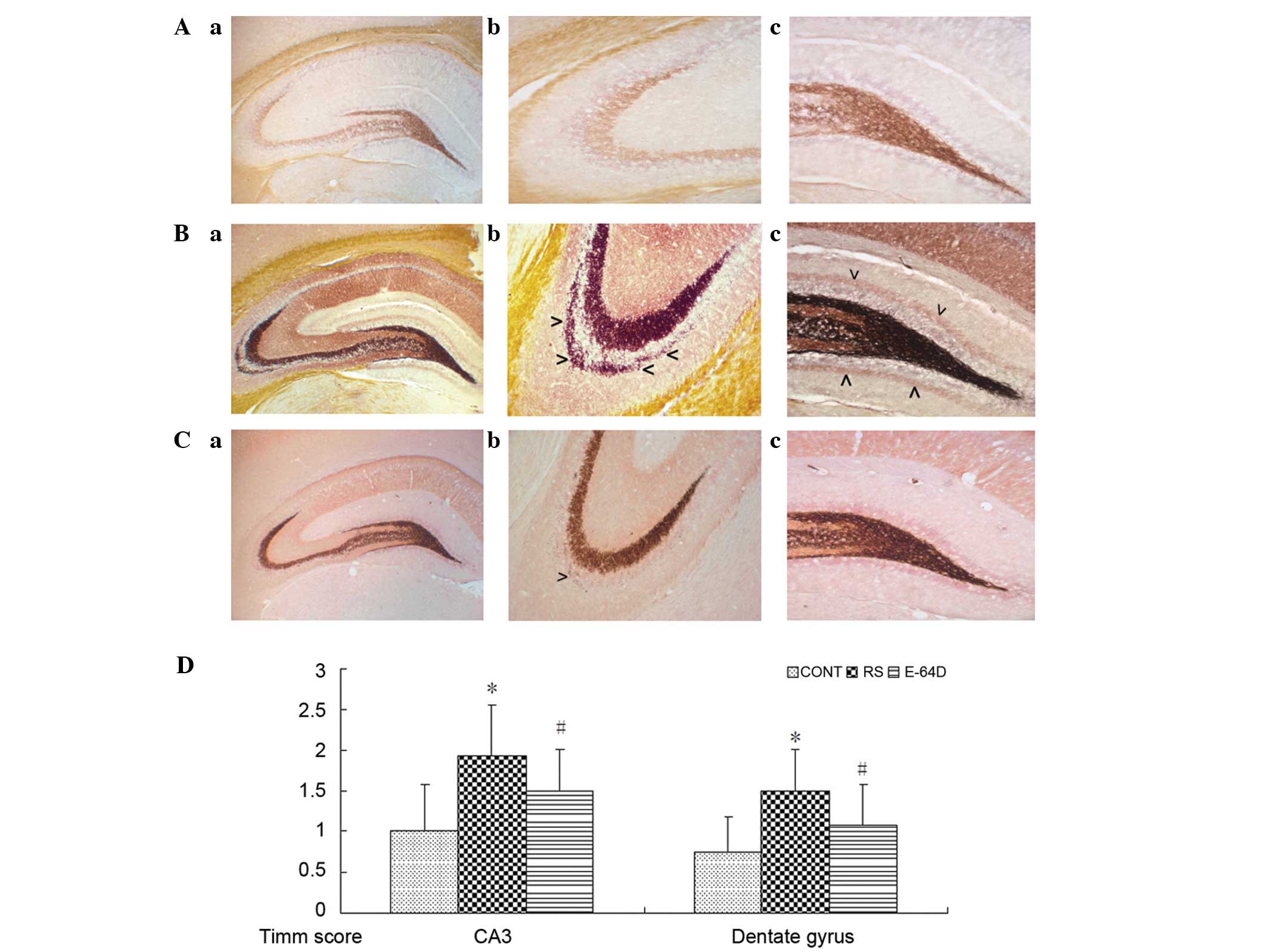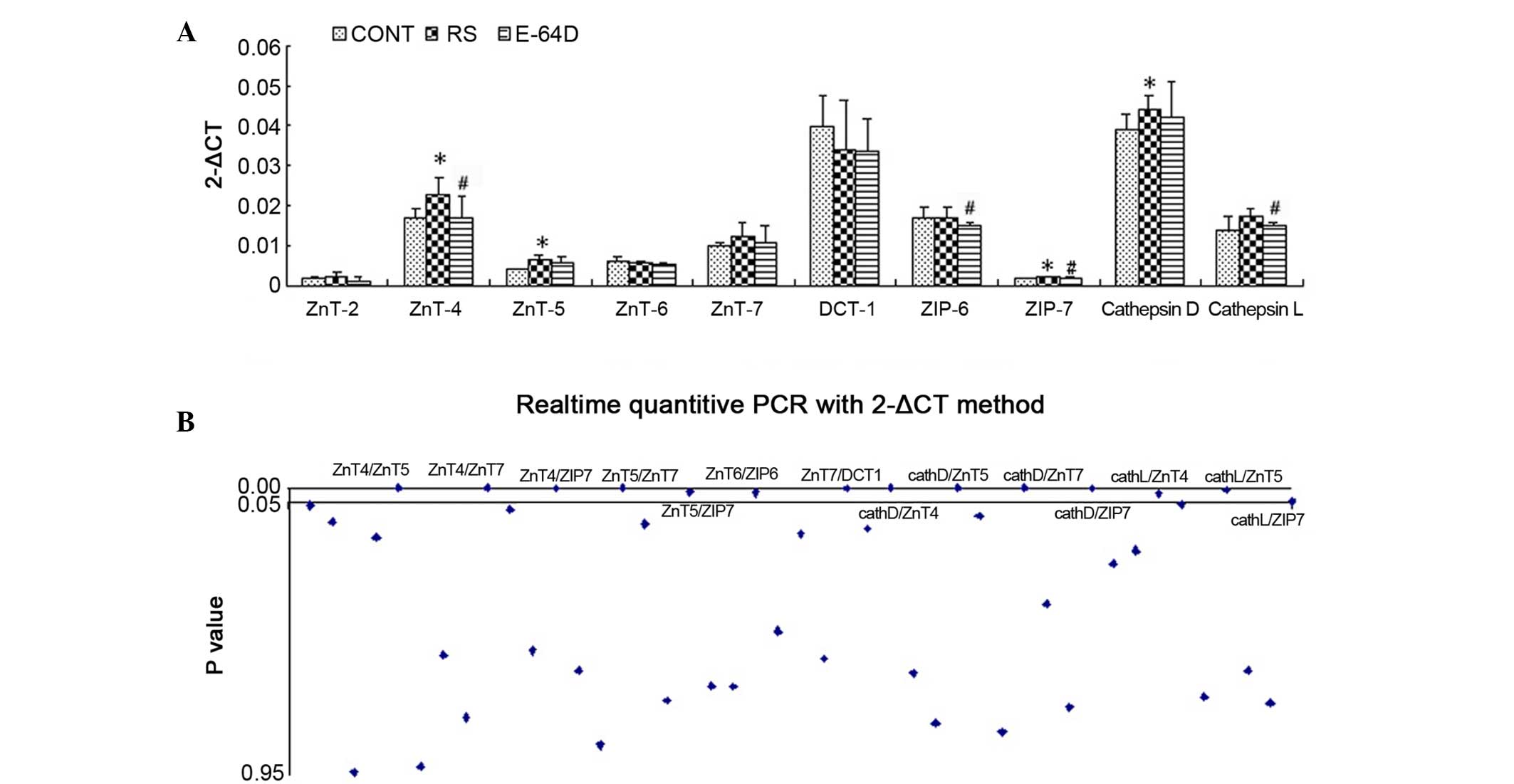|
1
|
Au AK, Bayir H, Kochanek PM and Clark RS:
Evaluation of autophagy using mouse models of brain injury. Biochim
Biophys Acta. 1802:918–923. 2010. View Article : Google Scholar : PubMed/NCBI
|
|
2
|
Bae N, Ahn T, Chung S, Oh MS, Ko H, Oh H,
Park G and Yang HO: The neuroprotective effect of modified
Yeoldahanso-tang via autophagy enhancement in models of Parkinson's
disease. J Ethnopharmacol. 134:313–322. 2011. View Article : Google Scholar : PubMed/NCBI
|
|
3
|
Jing CH, Wang L, Liu PP, Wu C, Ruan D and
Chen G: Autophagy activation is associated with neuroprotection
against apoptosis via a mitochondrial pathway in a rat model of
subarachnoid hemorrhage. Neuroscience. 213:144–153. 2012.
View Article : Google Scholar : PubMed/NCBI
|
|
4
|
Holopainen IE: Seizures in the developing
brain: Cellular and molecular mechanisms of neuronal damage,
neurogenesis and cellular reorganization. Neurochem Int.
52:935–947. 2008. View Article : Google Scholar : PubMed/NCBI
|
|
5
|
Dulac O, Nabbout R, Plouin P, Chiron C and
Scheffer IE: Early seizures: Causal events or predisposition to
adult epilepsy? Lancet Neurol. 6:643–651. 2007. View Article : Google Scholar : PubMed/NCBI
|
|
6
|
Holmes GL: Effects of seizures on brain
development: Lessons from the laboratory. Pediatr Neurol. 33:1–11.
2005. View Article : Google Scholar : PubMed/NCBI
|
|
7
|
Ni H, Jiang YW, Bo T, Wang JM and Wu XR:
C-Fos, N-methyl-D-aspartate receptor 2C, GABA-A-alpha 1
immonoreactivity, seizure latency and neuronal injury following
single or recurrent neonatal seizures in hippocampus of Wistar rat.
Neurosci Lett. 380:149–154. 2005. View Article : Google Scholar : PubMed/NCBI
|
|
8
|
Ni H, Jiang YW, Tao LY, Cen JN and Wu XR:
Effects of penicillin-induced developmental epilepticus on
hippocampal regenerative sprouting, related gene expression and
cognitive deficits in rats. Toxicol Lett. 188:161–166. 2009.
View Article : Google Scholar : PubMed/NCBI
|
|
9
|
Ni H, Yan JZ, Zhang LL, Feng X and Wu XR:
Long-term effects of recurrent neonatal seizures on neurobehavioral
function and related gene expression and its intervention by
inhibitor of cathepsin B. Neurochem Res. 37:31–39. 2012. View Article : Google Scholar : PubMed/NCBI
|
|
10
|
Ni H, Feng X, Gong Y, Tao LY and Wu XR:
Acute phase expression pattern of ZnTs, LC3 and beclin-1 in rat
Hippocampus and its regulation by 3-methyladenine following
recurrent neonatal seizures. Biol Trace Elem Res. 143:320–331.
2011. View Article : Google Scholar : PubMed/NCBI
|
|
11
|
Luo CL, Chen XP, Yang R, Sun YX, Li QQ,
Bao HJ, Cao QQ, Ni H, Qin ZH and Tao LY: Cathepsin B contributes to
traumatic brain injury-induced cell death through a
mitochondria-mediated apoptotic pathway. J Neurosci Res.
88:2847–2858. 2010.PubMed/NCBI
|
|
12
|
Ni H, Jiang YW, Tao LY, Jin MF and Wu XR:
ZnT-1, ZnT-3, CaMKII, PRG-1 expressions in hippocampus following
neonatal seizure-induced cognitive deficit in rats. Toxicol Lett.
184:145–150. 2009. View Article : Google Scholar : PubMed/NCBI
|
|
13
|
Johnson MR, Wang K, Smith JB, Heslin MJ
and Diasio RB: Quantitation of dihydropyrimidine dehydrogenase
expression by real-time reverse transcription polymerase chain
reaction. Anal Biochem. 278:175–184. 2000. View Article : Google Scholar : PubMed/NCBI
|
|
14
|
Ray SK, Matzelle DC, Wilford GG, Hogan EL
and Banik NL: E-64-d prevents both calpain upregulation and
apoptosis in the lesion and penumbra following spinal cord injury
in rats. Brain Res. 867:80–89. 2000. View Article : Google Scholar : PubMed/NCBI
|
|
15
|
Ray SK, Matzelle DD, Wilford GG, Hogan EL
and Banik NL: Cell death in spinal cord injury (SCI) requires de
novo protein synthesis. Calpain inhibitor E-64-d provides
neuroprotection in SCI lesion and penumbra. Ann NY Acad Sci.
939:436–449. 2001. View Article : Google Scholar : PubMed/NCBI
|
|
16
|
Tsubokawa T, Solaroglu I, Yatsushige H,
Cahill J, Yata K and Zhang JH: Cathepsin and calpain inhibitor E64d
attenuates matrix metalloproteinase-9 activity after focal cerebral
ischemia in rats. Stroke. 37:1888–1894. 2006. View Article : Google Scholar : PubMed/NCBI
|
|
17
|
Tsubokawa T, Yamaguchi-Okada M, Calvert
JW, Solaroglu I, Shimamura N, Yata K and Zhang JH: Neurovascular
and neuronal protection by E64d after focal cerebral ischemia in
rats. J Neurosci Res. 84:832–840. 2006. View Article : Google Scholar : PubMed/NCBI
|
|
18
|
Dong XX, Wang YR, Qin S, Liang ZQ, Liu BH,
Qin ZH and Wang Y: P53 mediates autophagy activation and
mitochondria dysfunction in kainic acid-induced excitotoxicity in
primary striatal neurons. Neuroscience. 207:52–64. 2012. View Article : Google Scholar : PubMed/NCBI
|
|
19
|
Ni H, Ren SY, Zhang LL, Sun Q, Tian T and
Feng X: Expression profiles of hippocampal regenerative
sprouting-related genes and their regulation by E-64d in a
developmental rat model of penicillin-induced recurrent
epilepticus. Toxicol Lett. 217:162–169. 2013. View Article : Google Scholar : PubMed/NCBI
|
|
20
|
Takeda A: Zinc signaling in the
hippocampus and its relation to pathogenesis of depression. Mol
Neurobiol. 44:166–174. 2011. View Article : Google Scholar : PubMed/NCBI
|
|
21
|
Mitsuya K, Nitta N and Suzuki F:
Persistent zinc depletion in the mossy fiber terminals in the
intrahippocampal kainate mouse model of mesial temporal lobe
epilepsy. Epilepsia. 50:1979–1990. 2009. View Article : Google Scholar : PubMed/NCBI
|
|
22
|
Nakashima AS and Dyck RH: Zinc and
cortical plasticity. Brain Res Rev. 59:347–373. 2009. View Article : Google Scholar : PubMed/NCBI
|
|
23
|
McCormick NH and Kelleher SL: ZnT4
provides zinc to zinc-dependent proteins in the trans-Golgi network
critical for cell function and Zn export in mammary epithelial
cells. Am J Physiol Cell Physiol. 303:C291–C297. 2012. View Article : Google Scholar : PubMed/NCBI
|
|
24
|
Sutula TP and Dudek FE: Unmasking
recurrent excitation generated by mossy fiber sprouting in the
epileptic dentate gyrus: An emergent property of a complex system.
Prog Brain Res. 163:541–563. 2007. View Article : Google Scholar : PubMed/NCBI
|
|
25
|
Suzuki T, Ishihara K, Migaki H, Matsuura
W, Kohda A, Okumura K, Nagao M, Yamaguchi-Iwai Y and Kambe T: Zinc
transporters, ZnT5 and ZnT7, are required for the activation of
alkaline phosphatases, zinc-requiring enzymes that are
glycosylphosphatidylinositol-anchored to the cytoplasmic membrane.
J Biol Chem. 280:637–643. 2005. View Article : Google Scholar : PubMed/NCBI
|
|
26
|
Lichten LA and Cousins RJ: Mammalian zinc
transporters: Nutritional and physiologic regulation. Annu Rev
Nutr. 29:153–176. 2009. View Article : Google Scholar : PubMed/NCBI
|
|
27
|
Mims MP and Prchal JT: Divalent metal
transporter 1. Hematology. 10:339–345. 2005. View Article : Google Scholar : PubMed/NCBI
|
|
28
|
Yan G, Zhang Y, Yu J, Yu Y, Zhang F, Zhang
Z, Wu A, Yan X, Zhou Y and Wang F: Slc39a7/zip7 plays a critical
role in development and zinc homeostasis in zebrafish. PLoS One.
7:e429392012. View Article : Google Scholar : PubMed/NCBI
|
|
29
|
Taylor KM, Vichova P, Jordan N, Hiscox S,
Hendley R and Nicholson RI: ZIP7-mediated intracellular zinc
transport contributes to aberrant growth factor signaling in
antihormone-resistant breast cancer Cells. Endocrinology.
149:4912–4920. 2008. View Article : Google Scholar : PubMed/NCBI
|
|
30
|
Hogstrand C, Kille P, Nicholson RI and
Taylor KM: Zinc transporters and cancer: A potential role for ZIP7
as a hub for tyrosine kinase activation. Trends Mol Med.
15:101–111. 2009. View Article : Google Scholar : PubMed/NCBI
|
|
31
|
Luo CL, Li BX, Li QQ, Chen XP, Sun YX, Bao
HJ, Dai DK, Shen YW, Xu HF, Ni H, et al: Autophagy is involved in
traumatic brain injury-induced cell death and contributes to
functional outcome deficits in mice. Neuroscience. 184:54–63. 2011.
View Article : Google Scholar : PubMed/NCBI
|
|
32
|
Chung H, Yoon YH, Hwang JJ, Cho KS, Koh JY
and Kim JG: Ethambutol-induced toxicity is mediated by zinc and
lysosomal membrane permeabilization in cultured retinal cells.
Toxicol Appl Pharmacol. 235:163–170. 2009. View Article : Google Scholar : PubMed/NCBI
|

















